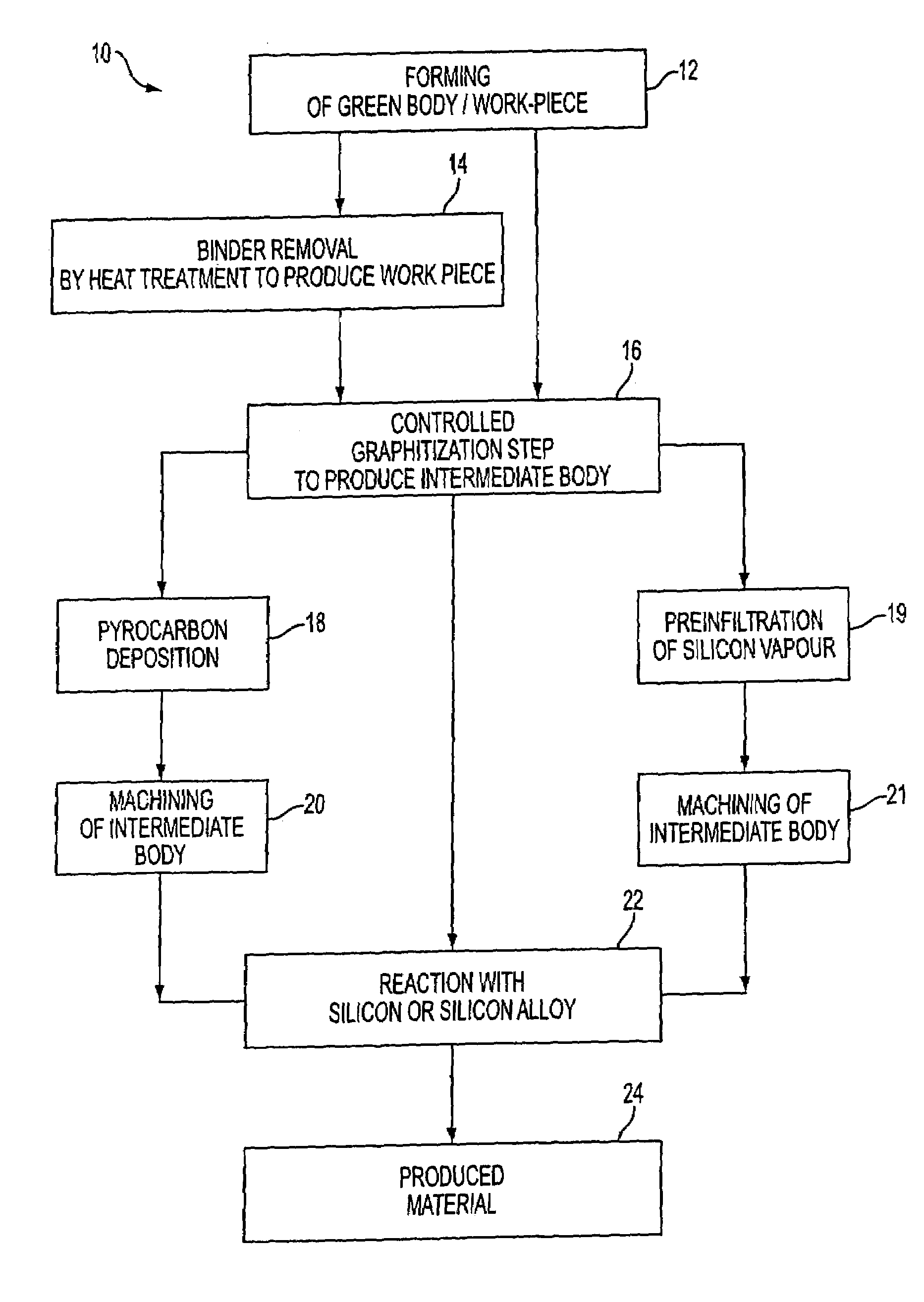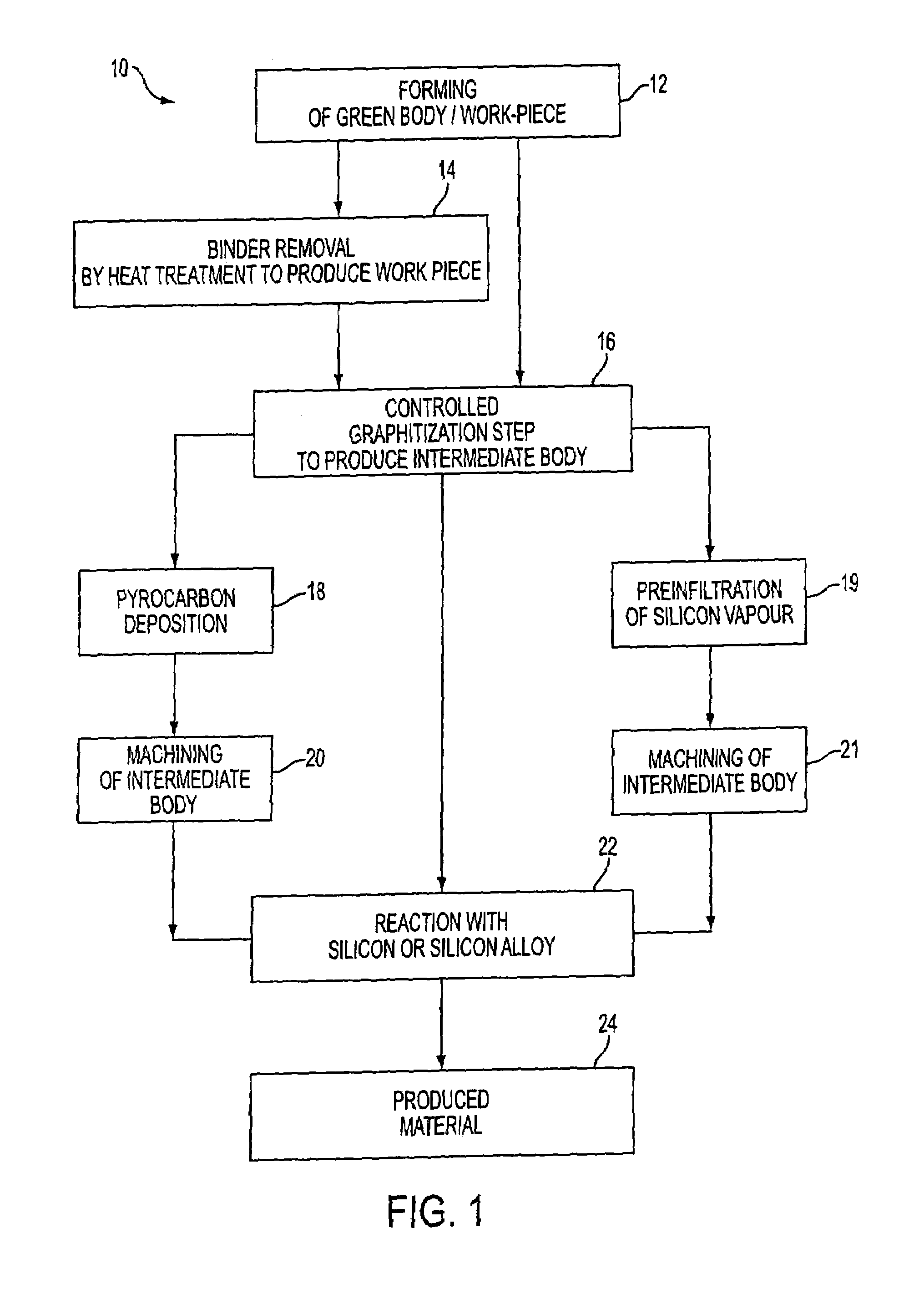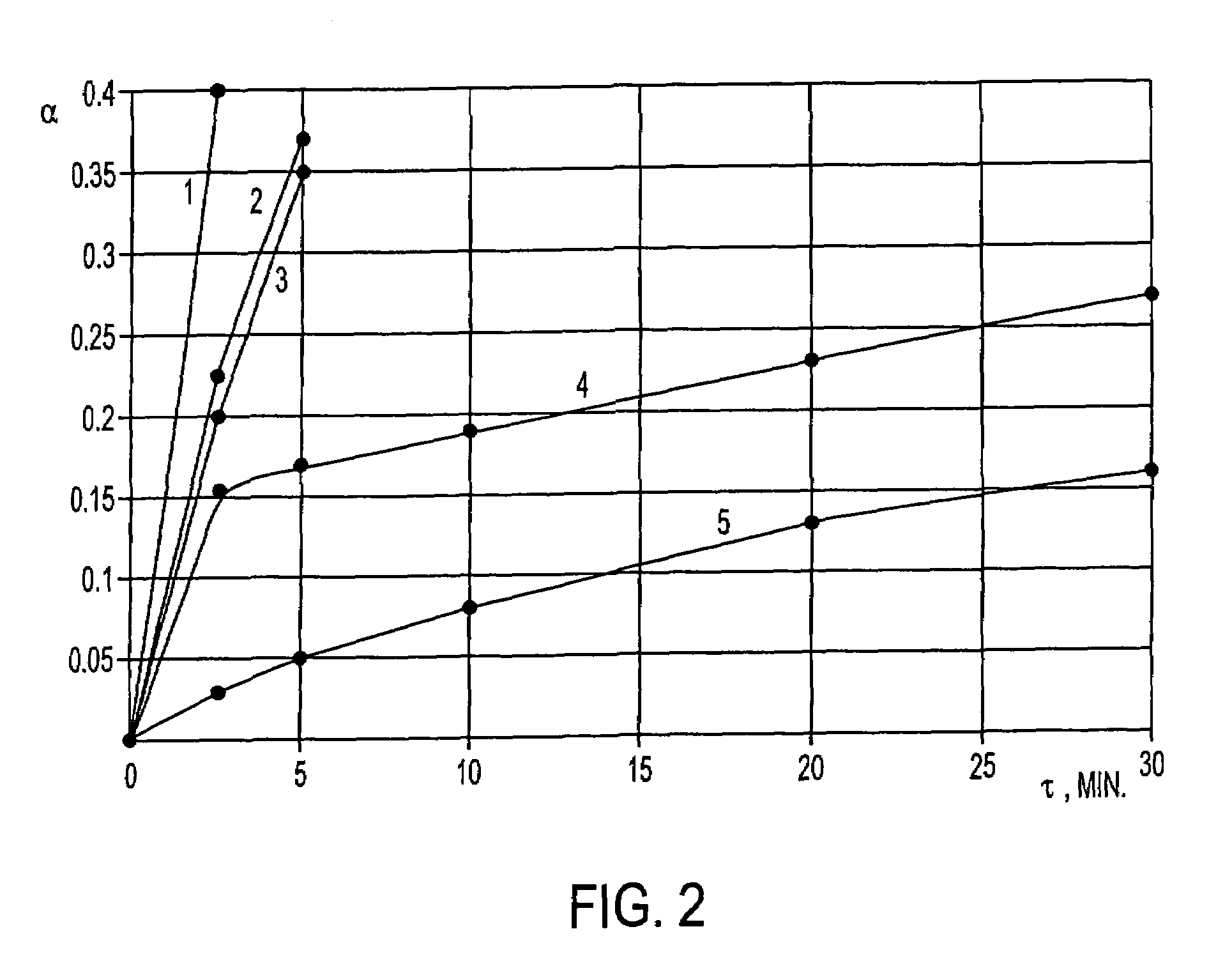Method of manufacturing a diamond composite and a composite produced by same
a manufacturing method and diamond composite technology, applied in the field of diamond composite and diamond composite produced thereby, can solve the problems of affecting the production efficiency of diamonds, the decomposition of diamonds to graphite is hindered by kinetic, and the structural form of diamonds is thermodynamically unstable at ambient temperatures and pressures, so as to achieve the effect of reducing production costs, simple production equipment, and reducing production costs
- Summary
- Abstract
- Description
- Claims
- Application Information
AI Technical Summary
Benefits of technology
Problems solved by technology
Method used
Image
Examples
example 1
Control of Properties
[0223]To demonstrate our ability to manufacture materials with different properties of key importance we have chosen variation in a) E-modulus and b) Electrical resistivity. The method of the present invention achieves the result by controllably selecting the following process steps:[0224]1. A mixture is formed of diamond micro-powder of the type ACM 28 / 20 and a binder −25% alcohol solution of phenol formaldehyde resin—in an amount of 2 wt-% dry resin of the mass of diamond powder. The mixture is stirred thoroughly and sieved through a screen with mesh size of 200 μm.[0225]2. Forming of bars of length 50 mm with rectangular cross section area 6×5 mm are made by pressing using metallic moulds, with a force of 45 kN at room temperature.[0226]3. The green bodies are removed from the mould, kept at room temperature in air for 10 hours, subsequently dried at 70° C. for 1 hour and hardened at 150° C. for 1 hour. The produced work-pieces contain 98 wt-% of diamond (56 ...
example 2
Infiltration by Dipping in Molten Silicon
[0234]A mixture is formed of diamond powder ACM 10 / 7 and ethyl alcohol added in amount of 10 wt-%. The mixture is stirred thoroughly and passed through a screen with the mesh size of 200 μm. Forming of a sample, of length 50 mm with rectangular cross section area 6×5 mm is made by pressing in a metallic mould with a force about 45 kN, at room temperature. The green body is removed from the mould and kept at room temperature for 3 hours. The work-piece contains 100 wt-% of diamond and has a porosity of 42 vol.-%. Heat treatment of the work-piece is carried out in a medium of argon, at a pressure of 800 mmHg and at 1550° C. during 4 mm. The heat treatment decreases the diamond concentration in the intermediate body by 22 wt-%. Note that the temperature and time of the heat treatment are chosen so that the silicon is totally melted but first after the completion of the work-piece heat treatment. Infiltration of the intermediate body is made by d...
example 2a
Infiltration with Silicon Alloys
[0236]Five work-pieces of Φ=20 mm and h=2 mm were produced of diamond powder ACM 63 / 50 in a similar manner as the steps 1–3 of Example 1. The porosity of the produced work-pieces was 44 vol-%. The heat treatment of the work-pieces was carried out at temperature of 1550° C. during 4 minutes. The produced intermediate bodies were infiltrated by silicon and silicon alloys, as shown in Table 2 below:
[0237]
TABLE 2Content ofInfiltrationStrengthAlloys foralloying elementtemperature[biaxialNo.infiltrationin Silicon alloy[° C.]strength, MPa]1PureSi—15501152Si—B6.915501133Si—Ti16.415501624Si—Cu23.514001485Si—Ni23.81400136
[0238]The infiltration temperature was 1550° C. for samples 1–3, and 1400° C. for sample 4 and 5. Bending strength measurements have shown that the use of silicon alloys compared with pure silicon can for instance increase bending strength of produced composites. For instance Si—Ti, Si—Cu, and Si—Ni alloys can increase the bending strength by u...
PUM
| Property | Measurement | Unit |
|---|---|---|
| Temperature | aaaaa | aaaaa |
| Temperature | aaaaa | aaaaa |
| Temperature | aaaaa | aaaaa |
Abstract
Description
Claims
Application Information
 Login to View More
Login to View More - R&D
- Intellectual Property
- Life Sciences
- Materials
- Tech Scout
- Unparalleled Data Quality
- Higher Quality Content
- 60% Fewer Hallucinations
Browse by: Latest US Patents, China's latest patents, Technical Efficacy Thesaurus, Application Domain, Technology Topic, Popular Technical Reports.
© 2025 PatSnap. All rights reserved.Legal|Privacy policy|Modern Slavery Act Transparency Statement|Sitemap|About US| Contact US: help@patsnap.com



